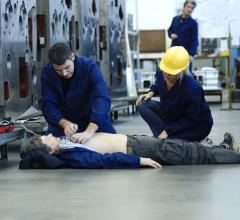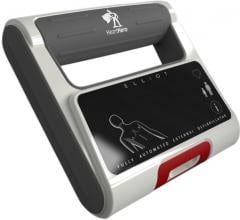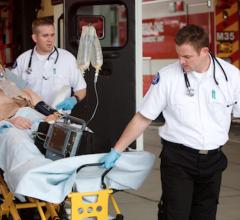
Cardiac Science's Powerheart AED G3 Plus
In a crowded Boston North Station, three bystanders waiting for a train heard a man cry out and immediately sprang into action. They removed his shirt, started chest compressions and cleared his airway while a transit police officer ran to get the station’s automated external defibrillator (AED). They shocked the man’s heart with the AED, saving his life.
Their actions were enabled by the confluence of three trends:
1. Dramatic improvements in AED design have greatly increased ease of use and affordability, placing an effective cardiac treatment modality in the hands of lay rescuers.
2. The likelihood of having an AED nearby in an emergency has increased significantly, due to the passage of Good Samaritan laws protecting individuals who aid the injured or ill, as well as laws mandating or encouraging AED deployment.
3. Increased numbers of Americans have received AED/CPR training, enabling them to deliver early defibrillation using public access AEDs. Shocking the victim within a few minutes of sudden cardiac arrest (SCA) is crucial to survival.(1, 2)
Each life saved with an AED demonstrates that America has the beginnings of a safety net against SCA, which is the leading cause of death in the U.S., according to the Heart Rhythm Foundation. However, with SCA survival rates estimated at only 5 to 8 percent, there is a long way to go.
To make the net stronger, I encourage cardiology professionals to advocate for the deployment of AEDs not only in public spaces, but also throughout hospitals and other clinical environments, in response to research studies suggesting that AEDs can improve in-hospital response to cardiac arrest.(3, 4, 5)
Dramatic improvements in AED ease of use, affordability
The public access AED is unique, when compared to other cardiac treatment modalities, because it saves lives before, not after, patients arrive at a hospital. An AED’s lifesaving capability stems in large part from its easy-to-use design, another distinguishing characteristic compared to most cardiac treatment modalities.
As part of a research study at the University of Washington Medical Center, a group of sixth-graders took an average of 90 seconds to complete defibrillation with an AED on a mannequin, compared to 67 seconds for emergency medical technicians and paramedics.(6) All of the children placed the electrode pads correctly and all remained clear of the “patient” during the shock delivery.
This ease of use, as well as the AED’s effectiveness and affordability as a treatment, has led to the deployment of more than 1 million AEDs, across America, according to Chris Chiames, executive director of the Sudden Cardiac Arrest Association. He also estimated that these AEDs save 10,000 to 15,000 lives per year. Even as the list of lives saved by AEDs grows, the American Heart Association (AHA) estimated that 45,000 to 50,000 more lives can be saved each year if AEDs were more widely available.
As a practicing cardiac surgeon, I first became interested in AEDs long before Defibtech was founded, after seeing a demonstration of an early model, which cost $4,000 and was not very easy to use. Gintaras Vaisnys, Defibtech’s co-founder and current president, and I both realized back then that AEDs could make a tremendous lifesaving impact if they could be engineered to be easy to use and inexpensive. Today AEDs cost less than $1,500, making them as ubiquitous as fire extinguishers.
Public AED availability has increased significantly
The increased number of deployed AEDs has been spurred by the passage of Good Samaritan laws protecting users of AEDs from liability, as well as by laws mandating or encouraging AED deployment.
However, Good Samaritan laws and available public dollars to purchase AEDs vary from state to state. For example, some states only cover trained rescuers from liability, not all rescuers. As a result, some organizations have balked at AED implementation because they believe it may increase their liability exposure.
However, organizations take a greater liability risk by not implementing AEDs. according to Dana Miller, executive director of Stat Pads, a service that helps organizations to avoid liability pitfalls through proper program implementation, training and maintenance. Miller said she has heard some concerns that AEDs will increase liability risk, but it’s not the norm
“People understand that they’re more at risk not having them than having them,” Miller said. “We’re also seeing a trend of more and more insurance companies and law firms purchasing them, and these are people who assess risk and defend risk.”
Miller’s statement is supported by the nation’s courts, which have increasingly recognized AED availability as a “standard of care.” Organizations including fitness centers, amusement parks, airlines and transportation authorities have been sued and have paid settlements or damages for not having AEDs, or for not having staff properly trained on how to use them.
For example, Marlene Allen, the widow of Dr. James R. Allen, filed a lawsuit against the Massachusetts Bay Transportation Authority (MBTA) and Amtrak after her husband died on an MBTA train unequipped with an AED. She settled her lawsuit after the MBTA agreed to improve its emergency procedures. Subsequently, the MBTA has deployed more than 100 AEDs on its subway and commuter trains. One of these AEDs saved the man at Boston’s North Station.
This legal environment favoring the deployment of AEDs has led to several states and municipalities mandating AEDs in locations such as schools, fitness/athletic facilities, assisted living facilities, government buildings and high-rise buildings.
In some cases, EMS departments help to coordinate AED distribution. One of the best examples of coordination between government and EMS is the $45 million Rural Access to Emergency Devices (Rural AED) Act, through which tens of thousands of AEDs have been distributed across America. States receiving these federal grants often work closely with state EMS departments to determine the best placement for the AEDs. Bob Stickel, president of LifeSavers Inc., a national AHA training center and AED distributor, has worked closely with Maine’s EMS bureau to deploy more than 1,130 AEDs throughout Maine – in police, fire, and EMS departments; in medical and dental clinics; and in town halls, schools, colleges, parks, libraries, and museums.
Hospitals and health centers also have become involved in encouraging AED implementation. In Rochester, Minn., and Richmond, Va., the Mayo Clinic and Virginia Commonwealth University Health System work closely with EMS departments in community-wide efforts to improve sudden cardiac arrest survival. Rochester achieved a 46 percent survival from ventricular fibrillation rate in 2006-2007 due to its effort, according to a publication from the Resuscitation Outcomes Consortium.(7)
More Americans have received AED/CPR training
If you enter “AED saves” into a Google search, page after page of stories about people saved with AEDs will appear. In many of these stories, one or more of the rescuers have received AED/CPR training. In the Boston save, for example, the three responders were a student nurse, a registered nurse, and an emergency room technician.
Having an individual with AED/CPR training within earshot of a SCA victim is not unusual – and not an accident. It’s the result of a concerted effort by organizations such as the AHA to teach people across America about cardiac resuscitation techniques. According to Chiames, more than 10 million Americans receive first-time or refresher CPR training each year, with most courses including AED training.
Many workplaces train staff to participate in response teams as part of their AED program implementation. Companies including Starbucks, Trans International, and Kraft Foods have AED response teams that have reported life saves in the workplace. The individuals on the teams become a lifesaving resource not only at work, but also in their communities.
Deploying AEDs throughout hospitals
Research studies conducted within the hospital environment suggest using AEDs throughout hospitals and other clinical areas can improve resuscitation rates.(3, 4, 5) For example, the Atlanta VA Medical Center instituted a program of upgrading existing defibrillators and placing AEDs throughout the hospital, while also educating staff. Successful resuscitation rates more than doubled after this program was implemented.
The prevalence of both in-hospital and out of-hospital SCA demands that America continue to build its AED safety net. So far, that net has saved tens of thousands of Americans. Unfortunately, hundreds of thousands more have fallen because the net isn’t complete. As cardiology professionals, we have a duty to continue this work.
Dr. Glenn W. Laub is the CEO of Defibtech, which designs and manufactures AEDs. www.defibtech.com. He is chairman of cardiac surgery and director of the Heart Hospital at St. Francis Medical Center in Trenton, N.J. Dr. Laub is a member of numerous organizations including the American College of Cardiology, the American College of Chest Physicians, the Society of Thoracic Surgeons, and the American Heart Association.
References
1. Capucci A, et al: “Triping survival from sudden cardiac arrest via early defibrillation without traditional education in cardiopulmonary resuscitation.” Circulation, 2002; 106:1065
2. Hallstrom AP, Omato, JP, et al: “Public-Access Defibrillation and Survival After Out-of-Hospital Cardiac Arrest.” New England Journal of Medicine, August 12, 2004; 351(7):637-646
3. Zafari AM, et al: “A program encouraging early defibrillation results in improved in-hospital resuscitation efficacy.” Journal of the American College of Cardiology, August 18, 2004; 44(4):846-852
4. Kaye W, et al: “Strengthening the in-hospital chain of survival with rapid defibrillation by first responders using automated external defibrillators: Training and retention issues.” Annals of Emergency Medicine, February 1995; 25:163-168
5. Rossano JW, et al: “Automated External Defibrillators and Simulated In-Hospital Cardiac Arrests.” US Pharmacist, 2009; 34(2):12-15
6. Gundry JW, et al: “A comparison of naive six-grade children with trained professionals in the use of an automated external defibrillator.” Circulation, 1999; 100:1703-1707
7. Nichol G, Thomas E, Callaway CW, et al. “Regional variation in out-of-hospital cardiac arrest incidence and outcome.” JAMA. 2008; 300:1423-1431.

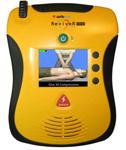
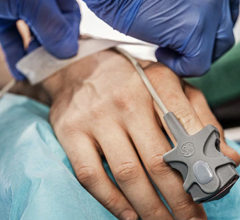
 July 28, 2023
July 28, 2023 


